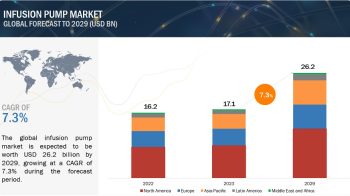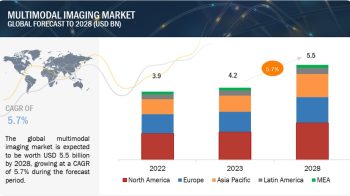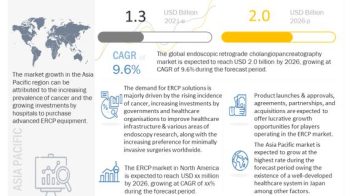Expected Revenue Growth:
The global brain monitoring market size is estimated to be USD 8.6 billion by 2025 from USD 6.3 billion in 2020, at a CAGR of 6.2%.
Major Growth Boosting Factors:
The brain monitoring market is mainly driven by factors such as the increasing incidence and prevalence of neurological disorders, rising awareness of neurodegenerative diseases, growth in the number of traumatic brain injuries, and growing applications of brain monitoring in clinical trials.
Overview of This Research:
The study involved four major activities in estimating the current size of the Brain Monitoring market. Exhaustive secondary research was done to collect information on the market and its different sub-segments.
The next step was to validate these findings, assumptions, and market sizing with industry experts across the value chain through primary research. Both top-down and bottom-up approaches were employed to estimate the complete market size. After that, market breakdown and data triangulation procedures were used to estimate the market size of the segments and sub-segments.
Download PDF Brochure@
https://www.marketsandmarkets.com/pdfdownloadNew.asp?id=909
Market Size Estimation:
Both top-down and bottom-up approaches were used to estimate and validate the total size of the Brain Monitoring market. These methods were also used extensively to estimate the size of various subsegments in the market.
Recent Developments:
In 2018, GE Healthcare launched its SIGNA Premier 3.0T magnetic resonance imaging (MRI) system in Canada.
# In 2018, Philips collaborated with Samsung Electronics to connect Samsung’s ARTIK Smart IoT Platform to Philips’ HealthSuite Digital Platform. This addressed the growing need for connected health platforms that can safely access, share, and analyze information, helping health systems and providers achieve their goal of delivering better care to consumers.
# In 2017, Natus acquired the global Camino ICP monitoring product line, including its San Diego manufacturing facility, from Integra. The sale also included the US rights to Integra’s fixed-pressure shunts, as well as US rights to Codman’s DURAFORM dural graft implants, standard EVD catheters, and CSF collection systems.
# In 2017, Philips acquired Electrical Geodesics to expand its existing portfolio of imaging technologies and advanced informatics for neurological applications.
Bottom-Up Approach:
The bottom-up procedure was adopted to arrive at the overall size of the Brain Monitoring market from the revenue of key players (companies), their shares in the market, and their annual sales of Brain Monitoring products.
Hospitals accounted for the largest share of the end user segment of the brain monitoring market
Based on end-users, the global brain monitoring devices market is segmented into hospitals, neurology centers, diagnostic centers, ASCs & clinics, and other end users. The hospital segment held the largest share of the global brain monitoring market in 2019. Brain monitoring is a complex process, requiring expensive and advanced devices and equipment that are mainly found in hospitals.
Hospitals also see a considerably larger inflow of patients as compared to small clinics and other end users. Additionally, brain monitoring devices pose a considerable burden in terms of maintenance expenses on healthcare facilities; hospitals, more than other end-users, can bear such costs. Hence, brain monitoring devices are mostly used in hospitals, which consequently account for the largest share of this market segment.
North America accounted for the largest share of the global brain monitoring market
North America, Europe, the Asia Pacific, and the Rest of the World. North America held the largest share of the global brain monitoring market in 2019, while the Asia Pacific is projected to be the fastest-growing region in the forecast period. The high growth rate of the market in the Asia Pacific region can be attributed to the availability of low-cost labor and skilled manpower, increase in disposable incomes, rising prevalence of neurodegenerative disorders, and increasing government emphasis on healthcare reforms in the region.
Request Sample Pages@
https://www.marketsandmarkets.com/requestsampleNew.asp?id=909
Global Key Players:
Some of the leading players in the brain monitoring market include Natus Medical, Inc. (US), Nihon Kohden Corporation (Japan), Philips Healthcare (Netherlands), GE Healthcare (US), Siemens Healthineers (Germany), Compumedics, Ltd. (Australia), Medtronic (Ireland), CAS Medical Systems, Inc. (US), Drägerwerk AG & Co. KGaA (Germany), Advanced Brain Monitoring (US), Masimo Corporation (US), Spiegelberg GmbH & Co. KG (Germany), Cadwell Industries (US), NeuroWave Systems, Inc. (US), Nonin Medical, Inc. (US), Integra LifeSciences Corporation (US), Neurosoft (Russia), and Rimed (US).


